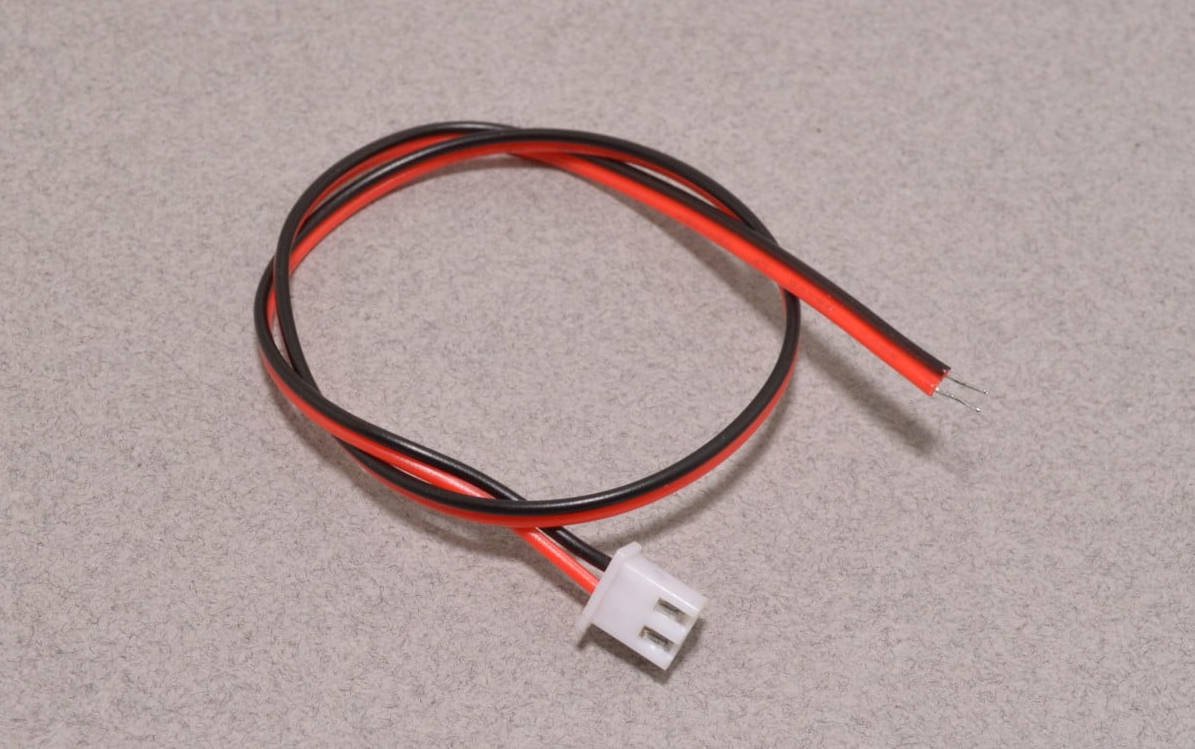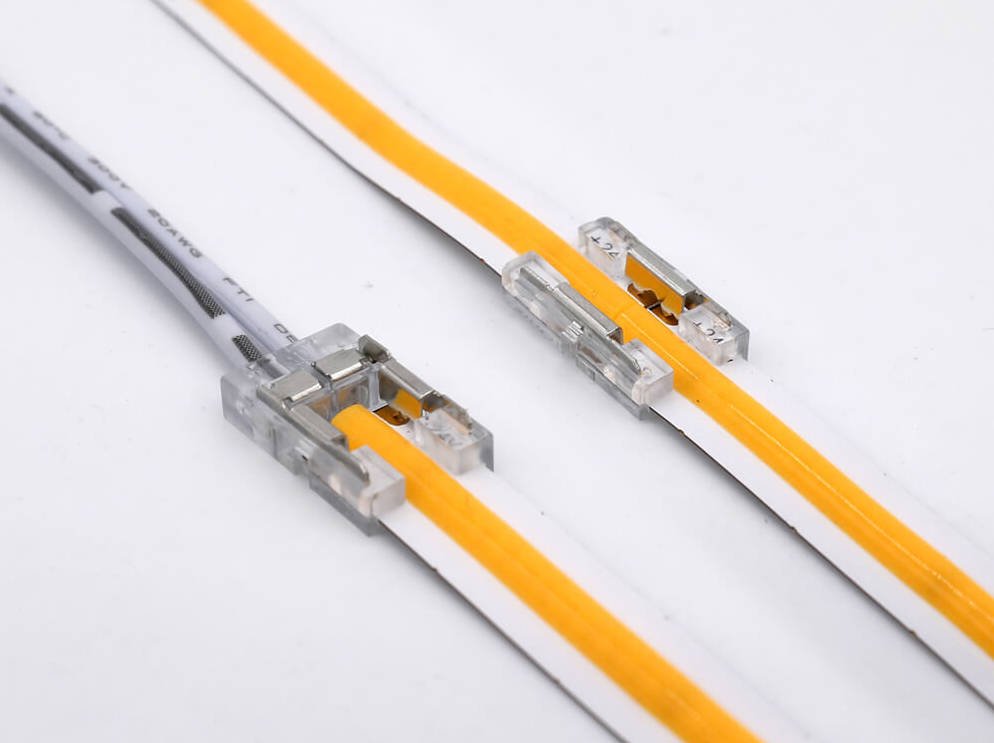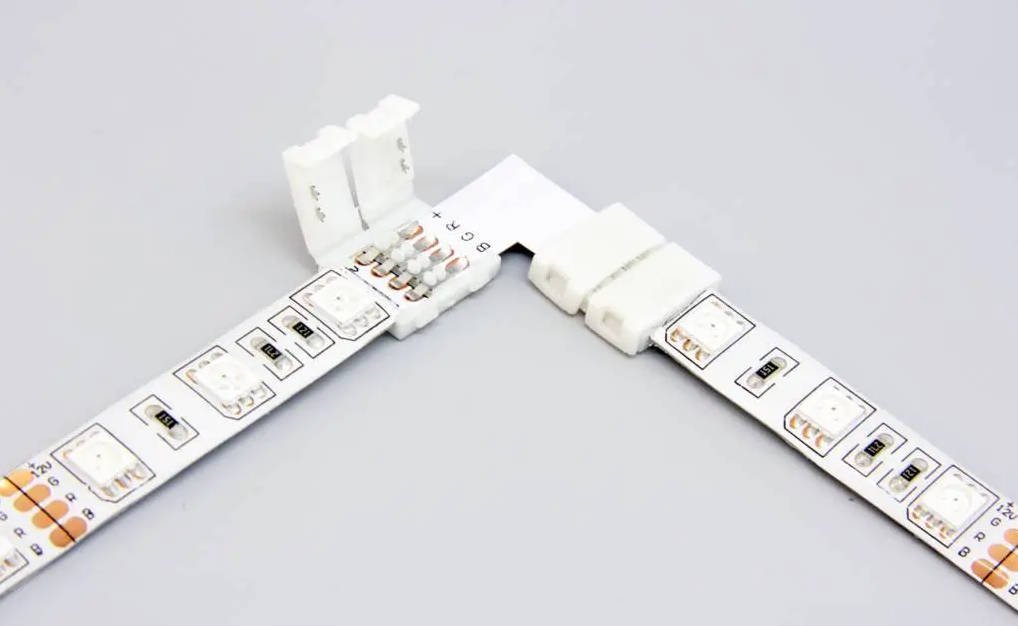
Introduction: The Dawn of Modern Lighting
Lighting has transformed dramatically over the past century, evolving from the flickering flames of candles and gas lamps to the sophisticated, energy-efficient solutions we enjoy today. Among these advancements, LED Strip Lights have risen to prominence, offering a blend of versatility, efficiency, and aesthetic appeal that traditional options struggle to match. Meanwhile, Rope Lights, a once-popular choice for decorative illumination, continue to hold a nostalgic charm but face increasing competition from their modern counterparts.
This comprehensive guide—spanning 10,000 words—aims to equip you with everything you need to know about LED Strip Lights and Rope Lights. Whether you’re a homeowner planning a cozy living room makeover, a business owner designing an eye-catching storefront, or a DIY enthusiast eager to experiment with innovative lighting, this article will serve as your ultimate resource. We’ll compare these two lighting options across multiple dimensions, explore their practical applications, and provide actionable advice to help you achieve stunning results.
Along the way, we’ll spotlight Fongkit, a trailblazing LED Strip Lights factory renowned for its high-quality wholesale LED Strip Lights and expertly crafted LED strip connectors. By the end, you’ll understand why Fongkit is the preferred choice for lighting professionals and hobbyists alike, and how their products can elevate your next project.
Let’s begin by tracing the evolution of lighting technology and setting the stage for this in-depth comparison.
The Evolution of Lighting Technology
The journey of lighting began with rudimentary sources like fire and oil lamps, which provided warmth and illumination for early civilizations. The 19th century introduced incandescent bulbs, courtesy of Thomas Edison, marking a significant leap forward. These bulbs, while revolutionary, were inefficient, converting most of their energy into heat rather than light. The 20th century brought fluorescent tubes, which improved efficiency but often produced harsh, unflattering light.
Enter the 21st century, and with it, the rise of LED (Light Emitting Diode) technology. LEDs use semiconductors to emit light when an electric current passes through them, offering unparalleled energy efficiency, durability, and versatility. This breakthrough paved the way for innovations like LED Strip Lights, which combine the benefits of LEDs with a flexible, user-friendly design. Today, LEDs dominate the lighting market, and their applications continue to expand, from residential decor to industrial installations.
Rope Lights, while still relevant, represent an earlier era of decorative lighting. Originally powered by incandescent bulbs, they’ve adapted to include LEDs but retain a design rooted in the past. As we delve deeper, we’ll uncover how these two options stack up in the modern world.
What Are Rope Lights? A Deep Dive
Rope Lights have long been a go-to solution for decorative and accent lighting, appreciated for their simplicity and durability. But what exactly are they, and how do they fit into today’s lighting landscape? Let’s explore their history, design, and applications in detail.

The History of Rope Lights
Rope Lights emerged in the mid-20th century as a practical solution for outdoor and holiday lighting. Comprising a string of small incandescent bulbs encased in a flexible, transparent PVC tube, they offered a weather-resistant alternative to exposed string lights. Their debut coincided with the post-war boom in suburban living, when homeowners sought affordable ways to enhance their properties with festive displays.
By the 1980s and 1990s, Rope Lights had become synonymous with Christmas decorations, wrapping around trees, outlining rooftops, and adorning porches. As LED technology gained traction in the early 2000s, manufacturers began producing LED-based Rope Lights, improving their efficiency and lifespan. Despite these upgrades, Rope Lights remain tethered to their original design, which limits their adaptability compared to newer options like LED Strip Lights.
Design and Construction
At their core, Rope Lights consist of a series of bulbs—either incandescent or LED—spaced at regular intervals inside a cylindrical plastic tube. The tube serves multiple purposes: it protects the bulbs from moisture and physical damage, diffuses the light for a soft, even glow, and provides flexibility for shaping around objects. Diameters typically range from ½ inch to 1 inch, making them bulkier than many modern alternatives.
The construction process involves stringing the bulbs along a central wire, encasing them in PVC, and sealing the ends to ensure weatherproofing. While this design is robust, it sacrifices precision. The diffused light output lacks the directional control of LED Strip Lights, and the fixed bulb spacing restricts customization. Additionally, Rope Lights are often sold in pre-cut lengths (e.g., 10, 18, or 50 feet), requiring additional hardware like connectors or splice kits for adjustments.
Types of Rope Lights
Rope Lights come in several variations, each suited to specific needs:
- Incandescent Rope Lights: The original version, these use traditional bulbs that emit a warm, nostalgic glow but consume more power and have a shorter lifespan (around 10,000 hours).
- LED Rope Lights: A modern upgrade, these incorporate LEDs for better efficiency (up to 25,000–30,000 hours) and lower heat output.
- Chasing Rope Lights: Featuring multiple circuits, these allow bulbs to blink or “chase” in patterns, ideal for dynamic displays.
- Color-Specific Rope Lights: Available in hues like red, blue, or green, though options are limited compared to LED strips.
Common Uses
Rope Lights shine in scenarios where durability and a uniform glow are priorities. Popular applications include:
- Holiday Decorations: Outlining homes, wrapping columns, or creating festive shapes like stars and wreaths.
- Outdoor Landscaping: Illuminating pathways, garden borders, or pergolas with a subtle, ambient light.
- Commercial Signage: Highlighting store names or logos with a bold, continuous line of light.
- Event Lighting: Adding ambiance to weddings, parties, or festivals with easy-to-install tubes.
While Rope Lights excel in these traditional roles, their bulky design and limited customization options have prompted many users to explore more advanced solutions. Let’s turn our attention to LED Strip Lights to see how they compare.
What Are LED Strip Lights? Exploring the Technology
LED Strip Lights represent the pinnacle of modern lighting design, blending cutting-edge technology with unparalleled flexibility. In this section, we’ll unpack their construction, types, and advantages, revealing why they’ve become a favorite among designers, homeowners, and businesses.

The Rise of LED Technology
The advent of LED technology marked a turning point in the lighting industry. Unlike incandescent bulbs, which rely on a heated filament, or fluorescents, which use gas and mercury vapor, LEDs produce light through electroluminescence. When electricity flows through a semiconductor, it emits photons—light—without generating excessive heat. This process delivers exceptional efficiency, with LEDs converting up to 90% of energy into light, compared to just 10% for incandescent bulbs.
LED Strip Lights take this technology a step further, mounting tiny LED chips onto a flexible circuit board. Introduced in the early 2000s, they quickly gained traction for their slim profile, adaptability, and vibrant output. Today, they’re a staple in everything from home decor to high-tech installations, thanks to their ability to combine form and function.
Design and Construction
LED Strip Lights are engineered for precision and versatility. The core component is a flexible printed circuit board (PCB), typically 8–10 mm wide, embedded with surface-mounted diodes (SMDs). These SMDs—such as the common 3528, 5050, or 2835 models—determine the strip’s brightness, color, and power consumption. The PCB is coated with a protective layer (e.g., silicone or epoxy) for durability, and many strips feature adhesive backing for easy installation.
Unlike Rope Lights, LED strips emit light directionally, allowing for focused illumination rather than a diffused glow. They can be cut at designated points (usually every 2–4 inches) and reconnected using LED strip connectors, making them highly customizable. Power is supplied via a low-voltage adapter (typically 12V or 24V), ensuring safety and efficiency.
Types of LED Strip Lights
LED Strip Lights come in a dizzying array of options, catering to diverse needs:
- Single-Color Strips: Available in warm white (2700K–3000K), cool white (6000K–6500K), or colors like red and blue, these are ideal for task lighting or mood setting.
- RGB Strips: Equipped with red, green, and blue LEDs, these can produce millions of colors via a controller, perfect for dynamic effects.
- RGBW Strips: Adding a dedicated white LED, these offer both vibrant colors and pure white light for versatile use.
- Tunable White Strips: Adjustable from warm to cool white, these mimic natural daylight cycles and support circadian rhythms.
- Smart Strips: Compatible with apps or voice assistants like Alexa, these enable remote control and automation.
- Waterproof Strips: Rated IP65 or IP68, these are sealed for outdoor or wet environments.
Advantages of LED Strip Lights
LED Strip Lights offer a host of benefits over traditional lighting:
- Energy Efficiency: Consuming 2–10 watts per meter, they slash energy bills compared to incandescent Rope Lights (5–15 watts/meter).
- Longevity: With lifespans of 30,000–50,000 hours, they outlast most alternatives, reducing replacement costs.
- Flexibility: Bendable and cuttable, they conform to any shape or space, from tight corners to curved surfaces.
- Customization: With dimming, color-changing, and smart features, they adapt to any aesthetic or function.
- Ease of Use: Adhesive backing and LED strip connectors simplify installation, no soldering required.
These advantages make LED Strip Lights a standout choice, but how do they fare against Rope Lights in a head-to-head comparison? Let’s find out.
Rope Lights vs. LED Strip Lights: A Detailed Comparison
To choose the right lighting for your project, you need a clear picture of how Rope Lights and LED Strip Lights differ. This section breaks down their features across key categories, complete with a comparison table for quick reference.
Design and Aesthetics
Rope Lights boast a tubular, diffused design that creates a soft, uniform glow. This makes them ideal for outlining large areas or adding a warm, ambient effect. However, their thickness (½–1 inch) can clash with sleek, modern interiors, and their light lacks directional focus.
LED Strip Lights are slim (8–10 mm wide) and flat, delivering a contemporary look with precise, directional light. They’re discreet enough to hide under cabinets or along edges, yet powerful enough to highlight specific features. This versatility suits both subtle and bold designs.
Light Source and Technology
Rope Lights can use either incandescent bulbs or LEDs. Incandescent versions are less efficient, producing more heat and lasting 10,000–15,000 hours. LED Rope Lights improve on this (up to 30,000 hours), but their diodes are often older models, lacking the performance of modern SMDs.
LED Strip Lights rely exclusively on advanced LEDs, typically SMD 5050 or 2835 chips, which offer superior brightness (300–2,000 lumens/meter), color accuracy, and efficiency. They generate minimal heat, enhancing safety and longevity (30,000–50,000 hours).
Installation and Flexibility
Rope Lights are flexible but cumbersome to install. Their weight and bulk require mounting clips, tracks, or ties, and cutting them often involves splicing kits or professional help. This limits their adaptability to complex layouts.
LED Strip Lights are a breeze to install, thanks to adhesive backing that sticks to most surfaces. They can be cut every few inches and reconnected with LED strip connectors, allowing for custom shapes and lengths without specialized tools. This plug-and-play design suits DIYers and pros alike.
Brightness and Color Options
LED Strip Lights deliver brighter output, ranging from 300 to 2,000 lumens per meter, compared to Rope Lights’ 200–600 lumens per meter. This makes strips suitable for both ambient and task lighting, while Rope Lights lean toward decorative use.
Color-wise, Rope Lights offer fixed options (e.g., warm white, red) or basic chasing effects, but they lack the range of LED strips. LED Strip Lights provide RGB, RGBW, and tunable white options, producing millions of colors and adjustable temperatures.
Energy Efficiency
LED Strip Lights consume 2–10 watts per meter, far less than Rope Lights’ 5–15 watts per meter (incandescent) or 3–8 watts (LED). Over time, this efficiency translates to significant savings, especially in large-scale setups.
Durability and Lifespan
Both options are durable, but LED Strip Lights edge out Rope Lights. High-quality strips withstand 30,000–50,000 hours of use, thanks to low heat output and robust PCB construction. Rope Lights last 10,000–30,000 hours, with incandescent versions more prone to burnout and heat-related wear.
Cost
Upfront, Rope Lights are cheaper, averaging $10–$20 for 10 feet. LED Strip Lights range from $15–$50 for the same length, depending on features (e.g., RGB, waterproofing). However, strips’ energy savings and longevity offset the initial cost, especially when sourced as wholesale LED Strip Lights from a factory like Fongkit.
Comparison Table
| Feature | Rope Lights | LED Strip Lights |
|---|---|---|
| Design | Tubular, diffused | Slim, directional |
| Light Source | Incandescent or LED | LED (SMD) |
| Installation | Clips/tracks needed | Adhesive, connectors |
| Brightness | 200–600 lumens/m | 300–2,000 lumens/m |
| Color Options | Limited | RGB, RGBW, tunable |
| Power Usage | 5–15 watts/m | 2–10 watts/m |
| Lifespan | 10,000–30,000 hrs | 30,000–50,000 hrs |
| Cost (10 ft) | $10–$20 | $15–$50 |
Applications: Where and How to Use Them
Both Rope Lights and LED Strip Lights have unique strengths, but LED strips’ versatility opens up a wider range of possibilities. Here’s how they shine in various settings.
Rope Lights Applications
- Holiday Decor: Wrapping trees, lining fences, or crafting seasonal displays with a classic glow.
- Garden Lighting: Outlining paths, ponds, or patios with weather-resistant tubes.
- Signage: Defining business names or logos with a continuous light line.
- Event Ambiance: Setting a warm tone for outdoor gatherings or festivals.
LED Strip Lights Applications
- Kitchen Under-Cabinet Lighting: Brightening countertops for cooking or display.
- Accent Lighting: Enhancing shelves, staircases, or artwork with pinpoint precision.
- Retail Displays: Using RGB strips to spotlight products or create immersive experiences.
- Automotive Customization: Adding flair to car interiors or underbodies.
- Smart Homes: Integrating with systems like Philips Hue for automated lighting scenes.
- Outdoor Features: Illuminating decks or pools with waterproof strips.
Example: A restaurant in New York installed wholesale LED Strip Lights from Fongkit under its bar counter, reducing energy costs by 35% while creating a chic, inviting vibe.
Installation and Maintenance: Step-by-Step
Installing LED Strip Lights
- Plan Your Layout: Measure the area, noting power source locations and desired effects.
- Cut and Connect: Trim at marked points and use LED strip connectors for corners or extensions.
- Mount the Strip: Clean the surface, peel the adhesive, and press firmly. Use clips for uneven areas.
- Power Up: Attach to a matching 12V/24V power supply, ensuring wattage compatibility.
- Test: Check brightness, colors, and controls, adjusting as needed.
Installing Rope Lights
- Measure and Cut: Cut at designated marks (if applicable) and prepare splice kits.
- Secure: Use clips or channels to mount, spacing supports every 12–18 inches.
- Connect Power: Plug into an outlet or hardwire, depending on the model.
- Test: Ensure all bulbs light up evenly.
Maintenance Tips
- Cleaning: Wipe with a dry cloth; avoid water on non-waterproof strips.
- Heat Control: Ventilate enclosed setups to prolong lifespan.
- Inspection: Check connectors and power supplies for wear every 6–12 months.
Cost Analysis: Long-Term Value Breakdown
Let’s crunch the numbers to see which option offers better value:
- Initial Cost: Rope Lights: $10–$20/10 ft; LED Strips: $15–$50/10 ft.
- Energy Use (10 ft, 8 hrs/day, 1 yr): Rope Lights (100W): ~$12; LED Strips (30W): ~$3.60 (at $0.12/kWh).
- Lifespan Cost: LED Strips last 3–5x longer, reducing replacements.
Over 5 years, LED Strip Lights save $40–$100+ in energy and maintenance, making them a smarter investment. Bulk buys from a LED Strip Lights factory like Fongkit amplify these savings.
Fongkit: The Leader in LED Lighting Solutions
Fongkit is a standout LED Strip Lights factory, offering top-tier wholesale LED Strip Lights and LED strip connectors. Their products—ranging from RGB to smart strips—are built for performance and reliability, backed by rigorous quality control. For bulk buyers or DIY enthusiasts, Fongkit delivers cost-effective, innovative solutions that elevate any project.
Technical Insights: Understanding the Specs
For tech-savvy readers, key specs include:
- Voltage: 12V or 24V (strips); 120V (some Rope Lights).
- CRI: LED Strips often exceed 80, ensuring accurate colors.
- IP Rating: IP65+ for outdoor use.
Trends in Lighting: The Future Awaits
Smart lighting, sustainable materials, and IoT integration are shaping the future. LED Strip Lights are at the forefront, with Fongkit leading the charge in innovation.
Frequently Asked Questions
Q: Are LED Strip Lights safe?
A: Yes, low-voltage operation and minimal heat make them very safe.
Q: Can Rope Lights be dimmed?
A: Some LED versions can; incandescent ones typically cannot.
Conclusion: Making the Right Choice
LED Strip Lights outshine Rope Lights in flexibility, efficiency, and modernity. For quality and value, trust Fongkit—your partner in lighting excellence.



